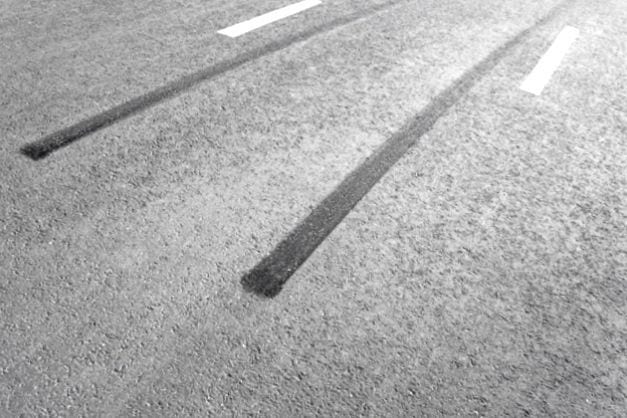
Car braking distance: All you need to know
Content
- What is the braking distance of a car?
- Braking distance formula?
- How to calculate the total stopping time and the total stopping distance?
- What factors influence braking and braking distance?
- What is the braking distance at speeds of 50, 80 and 110 km / h.
- What determines the average braking distance of any car
- When and how is the measurement taken
- How to increase the intensity of deceleration
- Stopping and braking distances of the car: what is the difference
- How to calculate the total stopping time and total stopping distance?
- How to increase the intensity of deceleration
- Related videos
- How to determine the speed along the braking distance?
- Questions and answers:
Imagine how many fewer accidents there would be if cars could stop instantly. Unfortunately, the elementary laws of physics say that this is impossible. The braking distance cannot be equal to 0 meters.
It is customary for car manufacturers to “brag” about another indicator: acceleration to 100 km / h. Of course, this is also important. But it would be nice to know how many meters the braking distance will stretch. Indeed, it differs for different cars.
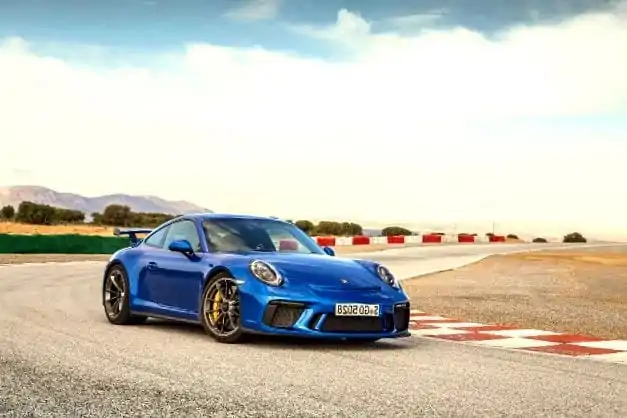
In this article we will talk about what you need to know about the braking distance for each driver in order to protect themselves on the road. Fasten your seat belt and let's go!
What is the braking distance of a car?
The braking distance is the distance that the vehicle will travel after activating the brake system to a complete stop. This is just a technical parameter, which, in combination with other factors, determines the safety of the car. This parameter does not include the response rate of the driver.
The totality of the reaction of a motorist to an emergency and the distance from the start of braking (the driver pressed the pedal) to the complete stop of the vehicle is called the stopping distance.
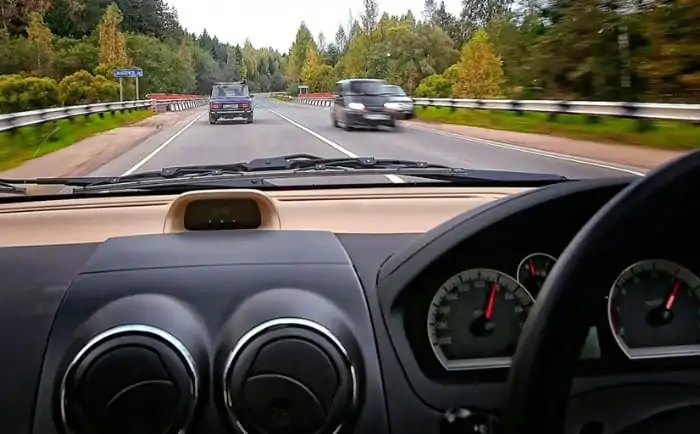
The rules of the road indicate critical parameters at which the operation of the vehicle is prohibited. The maximum limits are:
| Type of transport: | Braking distance, m |
| Motorcycle / Moped | 7,5 |
| A car | 14,7 |
| Bus / truck weighing up to 12 tons | 18,3 |
| Truck weighing over 12 tons | 19,5 |
Since the stopping distance directly depends on the speed of the vehicle, the above-mentioned distance covered by the vehicle when the speed decreases from 30 km/h is considered a critical indicator. (for motor vehicles) and 40 km/h. (for cars and buses) to zero.
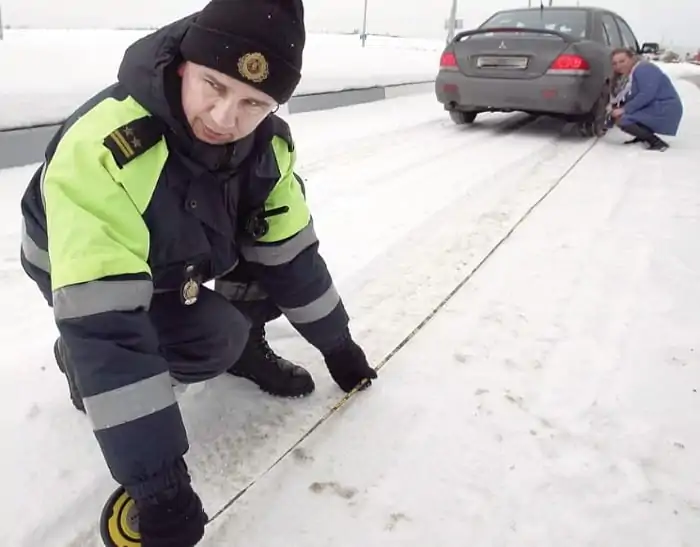
Too slow reaction of the brake system always leads to damage to the vehicle and often to injuries of those who are in it. For clarity, a car moving at a speed of 35 km / h will collide with an obstacle with a force identical to a shock when falling from a five-meter height. If the speed of a car in a collision with an obstacle reaches 55 km / h, then the impact force will be identical when falling from the third floor (90 km / h - falling from the 9th floor, or from a height of 30 meters).
These research results show how important it is for the motorist to monitor the condition of the brake system of the car, as well as tire wear.
Braking distance formula?
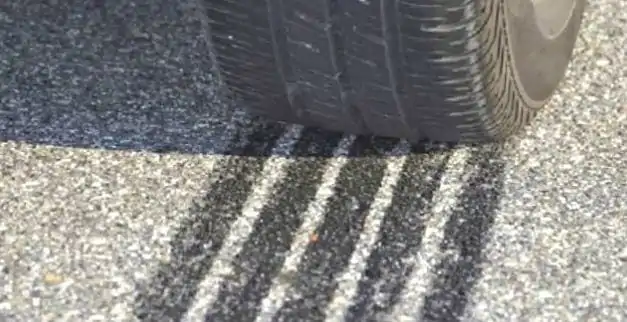
Vehicle braking distance - this is the distance traveled between the moment when the driver sensed danger and the vehicle came to a complete stop. Thus, it includes the distance traveled during the reaction time (1 second) and the stopping distance. It varies depending on speed, road conditions (rain, gravel), vehicle (brake condition, tire condition, etc.), and driver condition (fatigue, drugs, alcohol, etc.)
Dry braking distance calculation - formula
To calculate the distance traveled by a car on a dry road surface, users simply need to multiply the tenth of the speed by itself, which gives the following equation: (V/10)²=Dry stopping distance .
- At a speed of 50 km / h, the braking distance = 5 x 5 = 25 m.
- At a speed of 80 km/h, the stopping distance = 8 x 8 = 64 m.
- At a speed of 100 km / h, the braking distance = 10 x 10 = 100 m.
- At a speed of 130 km / h, the braking distance = 13 x 13 = 169 m.
Wet braking distance calculation - formula
Road users can also calculate the stopping distance of their vehicle when it is driving on wet road surfaces. All they have to do is take the stopping distance in dry weather and add half that same braking distance in dry weather, giving the following equation: (V/10)²+((V/10)²/2)=wet stopping distance.
- At a speed of 50 km/h, wet weather braking distance = 25+(25/2) = 37,5 m.
- At a speed of 80 km/h, wet weather braking distance = 80+(80/2) = 120 m.
- At a speed of 100 km/h, wet weather braking distance = 100+(100/2) = 150 m.
- At a speed of 130 km/h, wet weather braking distance = 169+(169/2) = 253,5 m.
Factors affecting braking distance
Several factors have a certain influence on a driver's reaction time: his blood alcohol level, his drug use, his state of fatigue, and his level of concentration. In addition to vehicle speed, weather conditions, road conditions and tire wear are also taken into account when calculating the braking distance.
Reaction distance
This term, also called perception-reaction distance is the distance that a vehicle travels between the moment when the driver perceives the danger and the moment when the information is analyzed by his brain. We usually talk about average duration 2 seconds for drivers who drive in good conditions. For others, the reaction time is much longer, and this is often combined with excessive speed, which has the direct effect of greatly increasing the risk of collision.
Braking distances
When we talk about stopping distance, we mean the distance that a vehicle travels. from the moment the driver presses the brake pedal until the vehicle comes to a complete stop. As with reaction distance, the faster the vehicle, the longer the stopping distance.
Thus, the stopping distance formula can be represented as:
Total braking distance = reaction distance + braking distance
How to calculate the total stopping time and the total stopping distance?
As we noted above, the driver needs time to make a decision on braking. That is, to react. Plus, it takes time to move the foot from the gas pedal to the brake pedal and the machine itself to respond to this action.
There is a formula that averages out the reaction path of the driver. Here she is:
(Speed in km / h: 10) * 3 = reaction path in meters
Imagine the same situation. You drive at a speed of 50 km / h and decided to brake smoothly. While you make a decision, the car will drive 50/10 * 3 = 15 meters. The second value (the length of the real braking distance) we considered higher - 25 meters. As a result, 15 + 25 = 40. This is the distance that your car will cover until you completely stop.
What factors influence braking and braking distance?
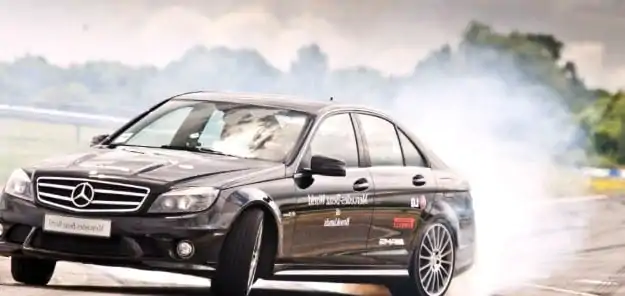
We already wrote above that many factors influence the length of the braking distance. We offer to consider them in more detail.
Speed
This is a key factor. This refers not only to the speed of the car, but also the reaction speed of the driver. It is believed that the reaction of all is approximately the same, but this is not entirely true. The driving experience, the state of human health, the use of medications, etc., play a role. Also, many "reckless" neglect the law and are distracted by smartphones while driving, which, in the end, can lead to disastrous consequences.
Remember one more important point. If the speed of the car doubles, the length of its braking distance grows 4 times! Here the 1: 1 ratio does not work.
Traffic circumstances
Undoubtedly, the condition of the road surface affects the length of the brake line. On an icy or wet track, it can grow at times. But these are far from all factors. You should also be wary of fallen leaves on which the tires glide perfectly, cracks in the coating, pits and so on.
Tires
The quality and condition of the rubber greatly affects the length of the brake line. Often, more expensive tires provide better grip on the car. Please note that if the tread depth has erased more than the permissible value, then the rubber loses its ability to divert enough water when driving on wet roads. As a result, you may encounter such an unpleasant thing as aquaplaning - when the car loses traction and becomes completely uncontrollable.
To shorten the braking distance, it is recommended to maintain optimal tire pressure. Which one - the automaker will answer this question for you. If the value deviates up or down, the braking line will increase.
Depending on the coefficient of adhesion of tires with road surface, this indicator will be different. Here is a comparative table of the dependence of the stopping distance on the quality of the road surface (a passenger car whose tires have an average coefficient of adhesion):
| 60km / h | 80 km / h. | 90 km / h. | |
| Dry asphalt, m. | 20,2 | 35,9 | 45,5 |
| Wet asphalt, m. | 35,4 | 62,9 | 79,7 |
| Snowy road, m. | 70,8 | 125,9 | 159,4 |
| Ice, m. | 141,7 | 251,9 | 318,8 |
Of course, these indicators are relative, but they clearly illustrate how important it is to monitor the condition of automobile rubber.
Technical condition of the machine
A car can drive on the road only in good condition - this is an axiom that does not require evidence. To do this, conduct routine diagnostics of your car, timely repair and change the brake fluid.
Remember that worn brake discs can double the braking line.
Distraction on the road
While the car is moving, the driver has no right to be distracted from driving the vehicle and controlling the traffic situation. Not only its safety, but the lives and health of passengers, as well as other participants in the movement, depend on this.
Here's what happens in the driver’s brain when an emergency occurs:
- traffic assessment;
- decision making - to slow down or maneuver;
- response to the situation.
Depending on the driver’s innate abilities, the average reaction speed is between 0,8 and 1,0 seconds. This option relates to an emergency, rather than an almost automatic process when slowing down on a familiar stretch of road.

To many, this time period seems insignificant to pay attention to, but ignoring the danger can lead to fatal consequences. Here is a table showing the reaction of the driver and the path traveled by the car:
| Vehicle speed, km / h. | Distance to the moment of pressing the brake (time remains the same - 1 sec.), M. |
| 60 | 17 |
| 80 | 22 |
| 100 | 28 |
As you can see, even a seemingly insignificant second of delay can lead to sad consequences. That is why every motorist should never break the rule: “Do not be distracted and adhere to the speed limit!”
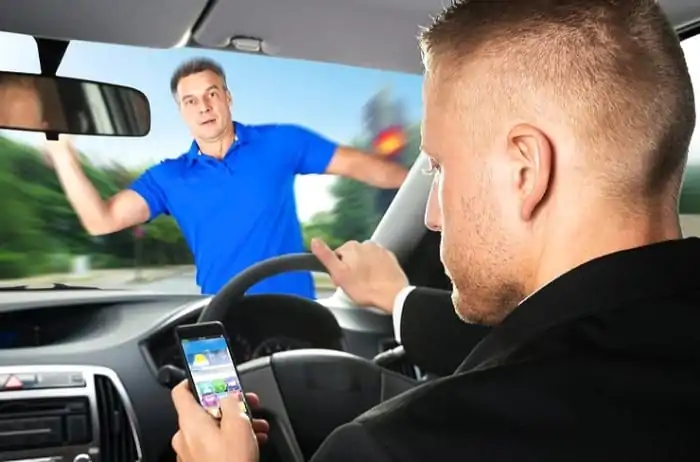
Various factors can distract the driver from control:
- mobile phone - even just to see who is calling (when talking on the phone, the driver’s reaction is identical to the reaction of a person in a state of mild intoxication);
- looking at a passing car or enjoying beautiful scenery;
- fastening seat belt;
- eating while driving;
- crash of a loose DVR or mobile phone;
- clarification of the relationship of the driver and passenger.
In fact, it is impossible to make a complete list of all the factors that can distract the driver from control. In view of this, everyone should be careful about the road, and the habit of not distracting the driver from control will be useful to passengers.
State of alcoholic or drug intoxication
Most countries in the world prohibit driving under the influence of drugs or alcohol. This is not because drivers are prohibited from enjoying life to the fullest. The braking distance of the car depends on this condition.
When a person is under the influence of drugs or alcohol, their reaction is reduced (this depends on the degree of intoxication, but the reaction will be slower in any case). Even if the vehicle is equipped with the most advanced braking systems and assistants, pressing the brake pedal too late in an emergency will result in an accident. In addition to braking, a drunk driver reacts more slowly to the need to perform a maneuver.
What is the braking distance at speeds of 50, 80 and 110 km / h.
As you can see, because of the many variables, it is impossible to create a clear table that describes the exact braking distance of an individual car. This is influenced by the technical condition of the car, and the quality of the road surface.
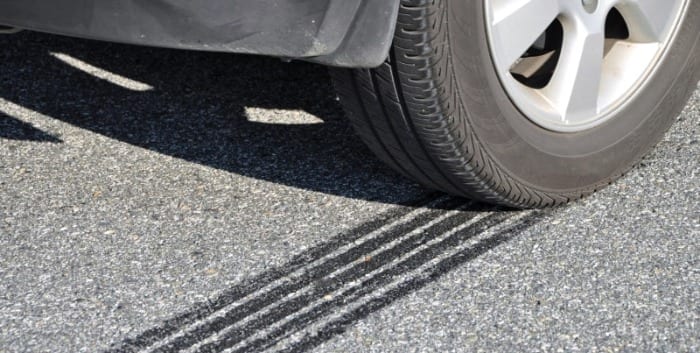
Average data of the braking distance of a car with a working system, quality tires and normal driver response:
| Speed, km / h. | Approximate stopping distance, m. |
| 50 | 28 (or six car bodies) |
| 80 | 53 (or 13 car bodies) |
| 110 | 96 (or 24 enclosures) |
The following conditional situation shows why it is important to adhere to the speed limit and not rely on “ideal” brakes. To stop at a pedestrian crossing from a speed of 50 km / h to zero, the car will need a distance of almost 30 meters. If the driver violates the high-speed mode and moves at a speed of 80 km / h, then with a reaction at a distance of 30 meters before the transition, the car will hit a pedestrian. In this case, the speed of the car will be about 60 km / h.
As you can see, you should never rely on the reliability of your car, but it will be correct to adhere to the recommendations, because they are taken from real situations.
What determines the average braking distance of any car
Summing up, we see that the braking distance of any car depends on a combination of such factors:
- vehicle speed;
- machine weight;
- serviceability of brake mechanisms;
- coefficient of adhesion of tires;
- pavement quality.
The stopping distance of the car is also affected by the reaction of the driver.
Given that in an emergency, the driver’s brain needs to process a lot of information, adhere to the speed limit - this is the very first commandment, the importance of which will never stop talking.
When and how is the measurement taken
Braking distance calculations will be needed when a vehicle is examined after a serious accident (forensic examination), in the process of technical testing of the machine, as well as after the modernization of the brake system.
There are various online calculators with which a driver can independently check these parameters of his car. An example of such a calculator is at this link... You can use this calculator right on the road. The main thing is to have access to the Internet. A little later, we will consider what formulas can be used to calculate this parameter.
How to increase the intensity of deceleration
First of all, the effectiveness of deceleration depends on the attentiveness of the driver. Even the best braking system and a complete set of electronic assistants are not able to change the laws of physics. Therefore, in no case should you be distracted from driving a car by making phone calls (even if the hand-free system is used, the reaction of some drivers can significantly slow down), text messages and viewing beautiful landscapes.

An equally important factor is the driver's ability to anticipate an emergency. For example, when approaching an intersection, even if a secondary road is adjacent to the main road, and there is a “Give way” sign on it, the driver needs to be more focused. The reason is that there are motorists who believe that the size of their vehicle gives them an edge on the road, regardless of the signs. In such situations, it is better to be prepared for emergency braking than to find out later who should yield to whom.
Turning and maneuvering on the road must be done with equal concentration, especially considering blind spots. In any case, the driver's concentration affects the reaction time and, as a result, the deceleration of the car. But no less important is the technical condition of the vehicle, as well as the presence of additional systems that increase the braking efficiency.
Also, if the driver chooses a safe speed, this can significantly shorten the vehicle's stopping distance. This is with regard to the actions of the driver.
Additionally, it is necessary to consider the load of the machine, as well as the ability of the braking system. That is, the technical part of the vehicle. Many modern car models are equipped with different amplifiers and additional systems, which greatly reduce the reaction path and the time of a complete stop of the car. These mechanisms include brake boosters, the ABS system, and electronic assistants to prevent a frontal collision. Also, the installation of improved brake pads and discs significantly reduces the braking distance.
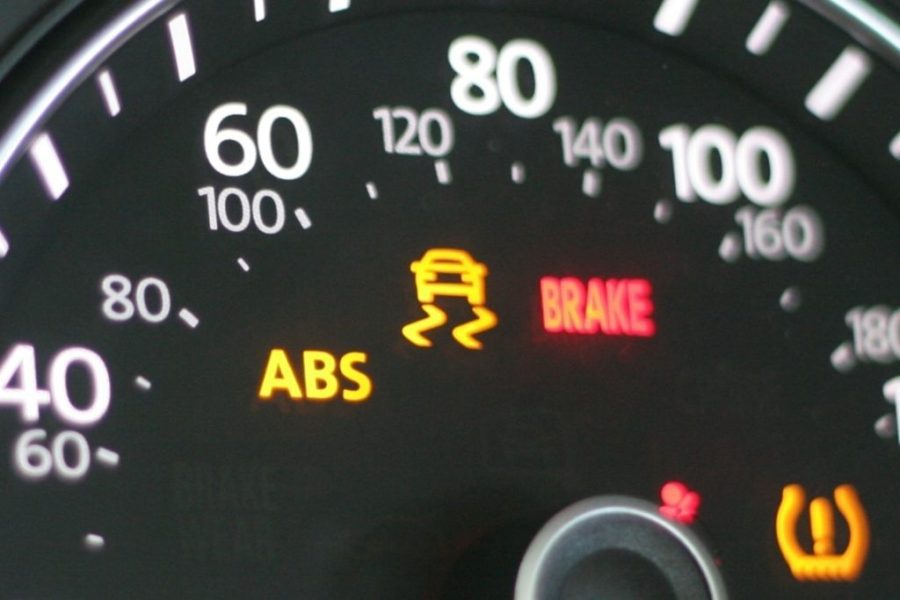
But no matter how "independent" the electronics of the car or the reliable actuators of the brake system, no one canceled the attentiveness of the driver. In addition to the above, it is extremely important to monitor the health of the mechanisms and timely carry out scheduled maintenance.
Stopping and braking distances of the car: what is the difference
The braking distance is the distance that the vehicle travels from the moment the driver presses the brake pedal. The beginning of this path is the moment the braking system is activated, and the end is a complete stop of the vehicle.
This value always depends on the speed of the vehicle. Moreover, it is always quadratic. This means that the braking distance is always proportional to the increase in vehicle speed. If the speed of the vehicle is twice the speed limit, the vehicle will come to a complete stop at a distance of four times the average.
Also, this value is influenced by the weight of the vehicle, the state of the braking system, the quality of the road surface, as well as the wear of the tread on the wheels.
But the processes that affect the complete stop of the machine include a much longer period of time than the response time of the braking system. Another equally important concept that affects the deceleration of a car is the driver's reaction time. This is the period of time in which the driver reacts to the detected obstacle. The average motorist takes about one second between detecting an obstacle and pressing the brake pedal. For some, this process takes only 0.5 seconds, and for others it takes much longer, and he activates the brake system only after two seconds.
The reaction path is always directly proportional to the speed of the car. The reaction time for a particular person may not change, but depending on the speed, during this time the car will cover its distance. These two quantities, the braking distance and the reaction distance, add up to the stopping distance of the machine.
How to calculate the total stopping time and total stopping distance?
It is impossible to make accurate calculations on an abstract car. Often the braking distance is calculated by what this value was for a particular car at a certain speed. As we have already said, the increase in stopping distance is quadratic to the increase in vehicle speed.
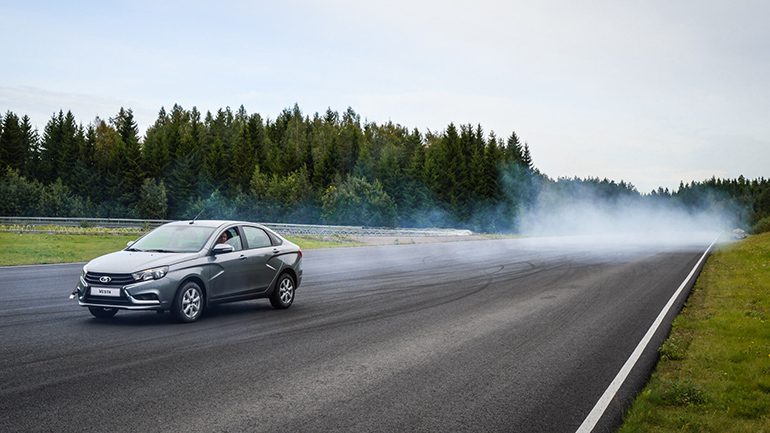
But there are also average figures. It is assumed that a medium-sized passenger car at a speed of 10 km / h has a braking distance of 0.4 m. If we take this ratio as a basis, then it is possible to calculate the braking distance for vehicles moving at a speed of 20 km / h (the value is 1.6 m) or 50 km / h (the indicator is 10 meters), and so on.
To calculate the stopping distance more accurately, you need to use additional information. For example, if you take into account the degree of tire resistance (the coefficient of friction for dry asphalt is 0.8, and for an icy road is 0.1). This parameter is substituted into the following formula. Braking distance = the square of the speed (in kilometers / hour) divided by the coefficient of friction multiplied by 250. If the car is moving at a speed of 50 km / h, then according to this formula, the braking distance is already 12.5 meters.
To obtain a specific figure for the driver's reaction path, there is another formula. The calculations are as follows. Reaction path = car speed divided by 10, then multiply the result by 3. If you substitute the same car moving at a speed of 50 km / h into this formula, the reaction path will be 15 meters.
A complete stop of the car (the same speed of 50 kilometers per hour) will occur in 12.5 + 15 = 27.5 meters. But even these are not the most accurate calculations.
So, the time of a complete stop of the vehicle is calculated by the formula:
P (full stop) = (the multiplier of the coefficient of braking efficiency and the initial braking speed divided by the multiplier of the acceleration of gravity and the coefficient of longitudinal adhesion of the tires to the asphalt) + reaction time of the driver + the period of operation of the brake system drive + the multiplier of the time for the growth of braking forces by 0.5.
So, as you can see, many factors affect the determination of a complete stop of a car, which can be completely different depending on the situation on the road. For this reason, once again: the driver must always be in control of what is happening on the road.
How to increase the intensity of deceleration
To keep the braking distance as low as possible in different circumstances, the driver can use one of two methods. Your best bet would be a combination of these ways:
- Driver's foresight. This method implies the driver's own ability to anticipate dangerous situations and choose a safe speed limit and correct distance. For example, on a flat and dry highway "Moskvich" can be accelerated, but if the road is slippery and winding with a large flow of cars, then in this case it would be better to reduce the speed. Such a car will brake less efficiently than a modern foreign car. It is also worth paying attention to what kind of braking technique the driver uses. For example, in a car that is not equipped with any auxiliary system, such as ABS, suddenly pressing the brake all the way to the stop often leads to a loss of traction. To prevent the car from skidding on an unstable road, it is necessary to use engine braking in low gear and intermittently pressing the brake pedal.
- Car modification. If the car owner equips his vehicle with more effective elements on which braking depends, then he will be able to increase the rate of deceleration of his car. For example, you can improve braking efficiency by installing better brake pads and discs, as well as good tires. If the car allows you to install additional mechanisms or even auxiliary systems on it (anti-lock braking, braking assistant), then this will also reduce the braking distance.
Related videos
This video shows you how to brake properly in an emergency if your car is not equipped with ABS:
How to determine the speed along the braking distance?
Not every driver knows that the stopping distance of a car at a speed of 60 km / h, depending on the braking conditions, can be either 20 or 160 meters. The ability of the vehicle to slow down to the required speed depends both on the road surface and weather conditions, as well as on the stability and controllability of the braking characteristics of the vehicle.
To calculate the braking speed of a car you need to know: maximum deceleration, braking distance, brake response time, range of change in braking force.
The formula for calculating the speed of a car from the length of the braking distance:


V – speed in km/h;
S – braking distance in meters;
Kт - vehicle braking coefficient;
Ksc - the coefficient of adhesion of the car to the road;
Questions and answers:
1. How to determineb speed along the braking distance? To do this, take into account the type of road surface, the mass and type of the vehicle, the condition of the tires, and the reaction time of the driver.
2. How to determine the speed of a car without braking distance? The driver's reaction time table compares the approximate speed. It is desirable to have a video recorder with speed fixation.
3. What stages does the stopping distance include? The distance traveled during the time when the brakes were applied and also the distance traveled during the steady-state deceleration to a complete stop.
4. What is the stopping distance at a speed of 40 km / h? Wet asphalt, air temperature, vehicle weight, type of tires, availability of additional systems that ensure a reliable stop of the vehicle - all this affects the test results. But for dry asphalt, many companies doing similar research provide similar data. At this speed, the braking distance of a passenger car is within 9 meters. But the stopping distance (the driver's reaction when the driver sees an obstacle and presses on the brake, which takes about one second on average + braking distance) will be 7 meters longer.
5. What is the stopping distance at a speed of 100 km / h? If the car accelerates to 100 km / h, then the braking distance on dry asphalt will be about 59 meters. The stopping distance in this case will be 19 meters longer. Therefore, from the moment an obstacle is detected on the road that requires the car to stop, and until the car stops completely, a distance of more than 78 meters is required at this speed.
6. What is the stopping distance at a speed of 50 km / h? If the car accelerates to 50 km / h, then the braking distance on dry asphalt will be about 28 meters. The stopping distance in this case will be 10 meters longer. Therefore, from the moment an obstacle is detected on the road that requires the car to stop, and until the car stops completely, a distance of more than 38 meters is required at this speed.
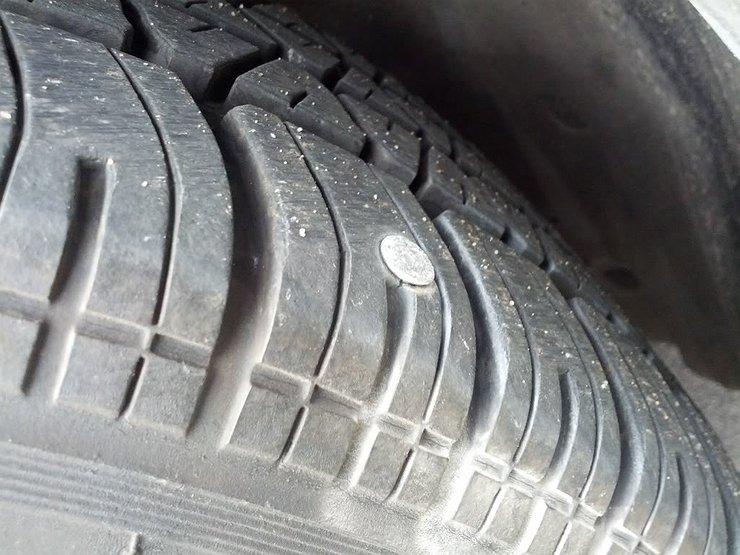
2 comment
Konstantin
Why does the weight of the car matter if it is not in the formula?
Or me
At 50 km/h you stop in no more than 10 meters. You wrote complete nonsense. Years ago, when there was a training ground for driving courses, there was the following practical test: You start, drive up to 40 km/h and the examiner knocks on the dashboard from time to time. You have to stop for a certain distance. I don't remember exactly how long it was, but in no case was it more than 10 meters.